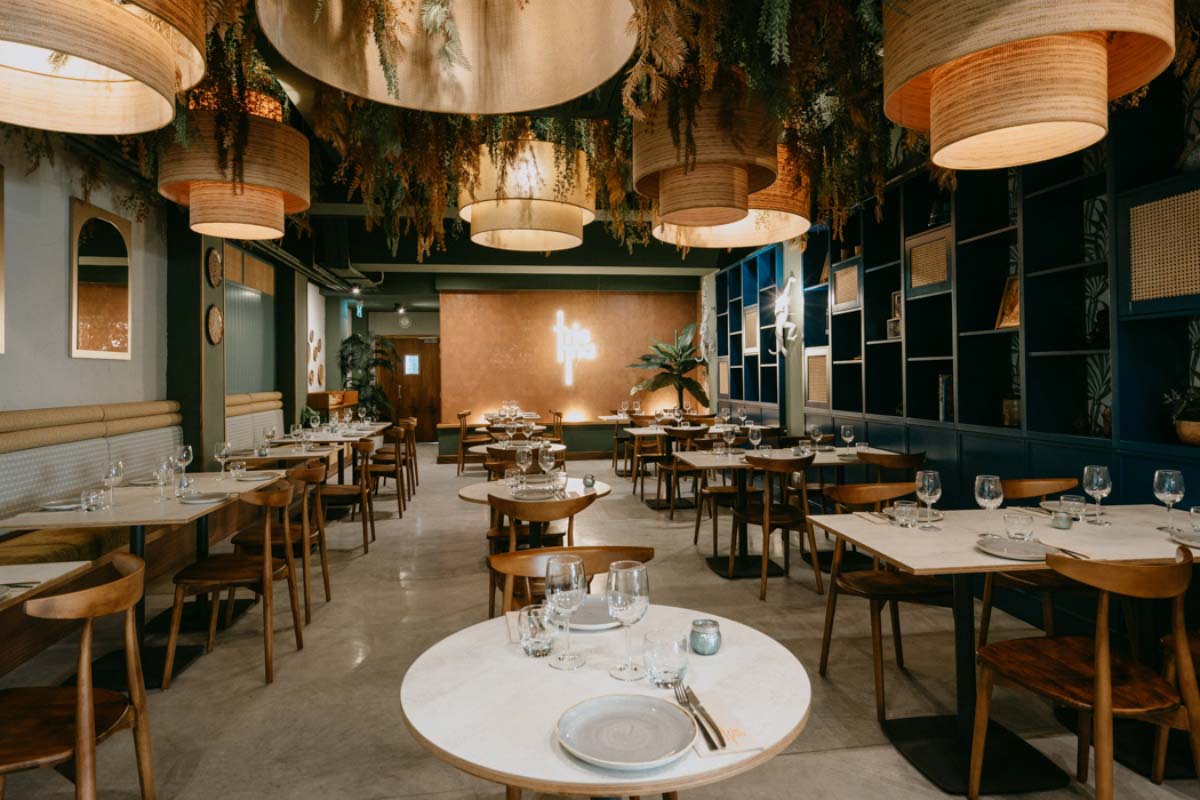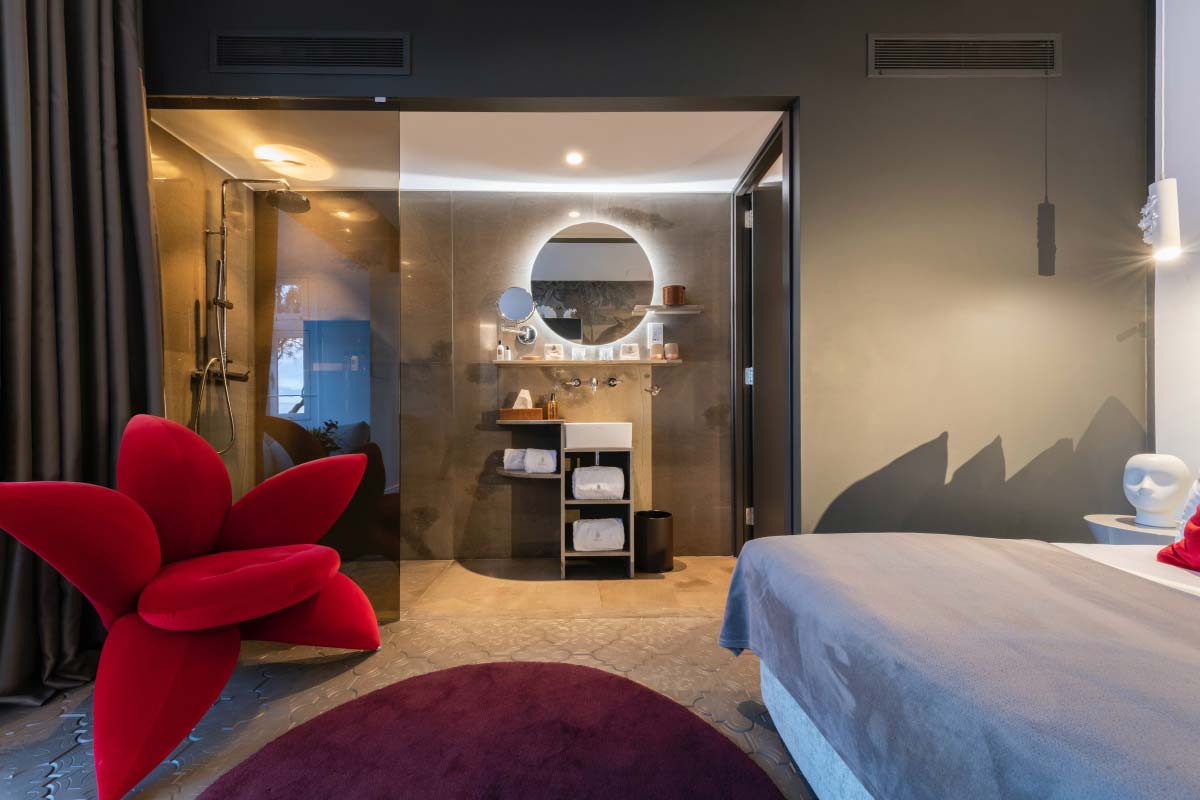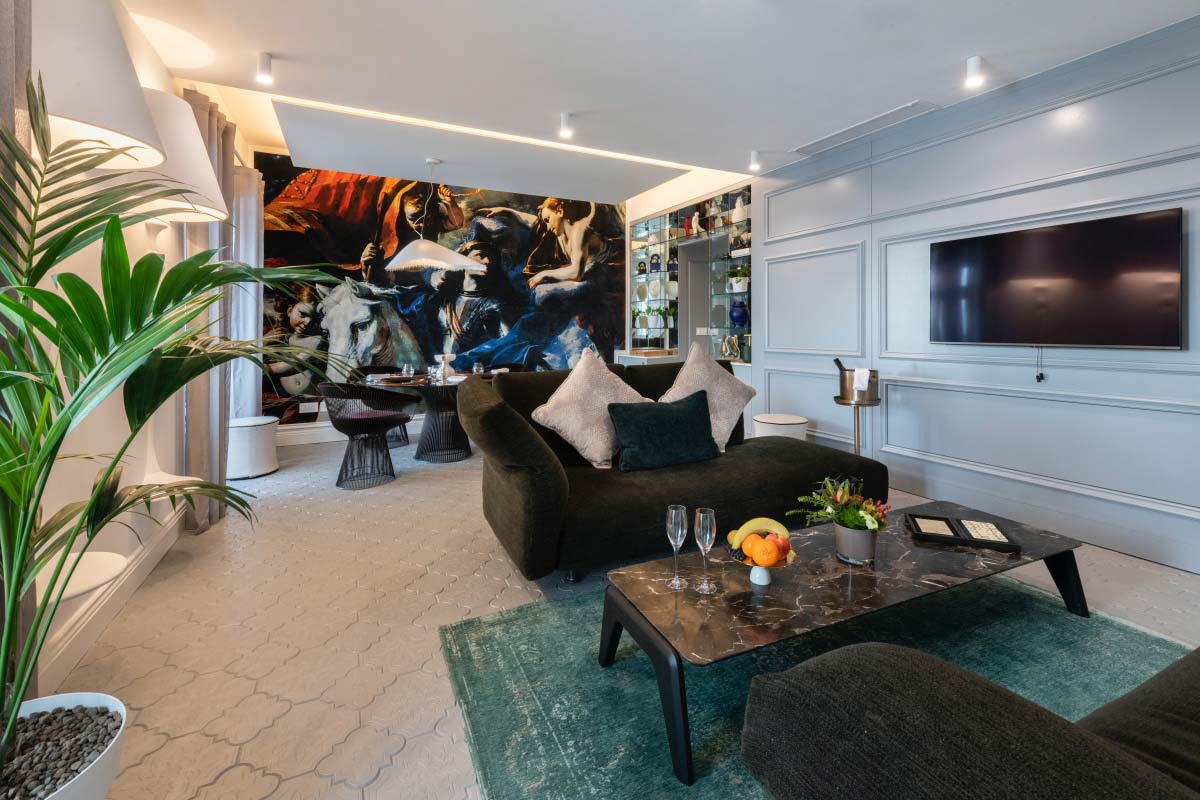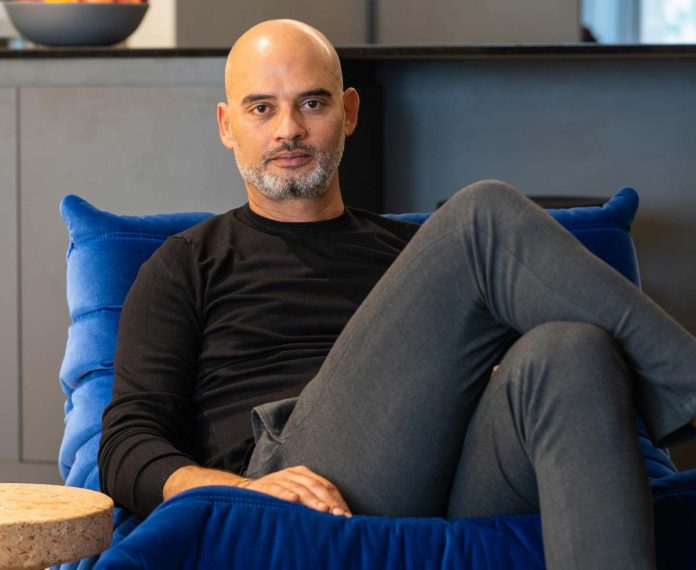A conversation with the architect-non-architect Keith Pillow in his Milanese “salon” (as he defines the location on Corso Monforte) to discover a career path that starts from thought and observation, from passions, and – though with some apparent initial conflict – from family.
How did DAAA Haus get started?
It began 15 years ago in Malta, where I was born and where I have lived. I worked with an advertising agency, I’m not an architect, though I come from a family of architects (sometimes naïve youth leads you not to do with your father does). In the evening (there were still no mobile phones, no email), when I returned home I listened to his conversations with clients and suppliers, I could grasp the many problems of construction sites, and I didn’t want to do that job. Today my father works with me. In those days my pathway seemed to be communication, I felt it was mine, and in the end it had a big influence on the future creation of DAAA Haus. My business thrived, I had studied hard and also in greater depth in London, everything was going well, but at a certain point it felt like a tight fit, there was something missing to be able to express my full potential. More and more often, clients would ask me for ideas or opinions on spaces to represent their brands, I would provide consulting on how to organize office spaces or how to set up displays in showrooms. At first it was like a hobby. On my staff there was a graphic designer who want to study interiors, so I encouraged her to move forward with that, until one day I said: “if you like, we can work together on projects, a little at a time, starting with smaller thing – you work on the interiors and I’ll do the communication.”

And that’s how DAAA Haus was born, right?
We got started by creating the DAAA Haus trademark, which means Design Arts (&) Architecture Associates House, and our client had faith in us, so many jobs began to come in. But here too, at a certain point I felt like something was missing: in Malta in those days, when faced with a project the architecture firms would begin with volumes and spaces, without assigning value to the communication around the project. We felt like dissidents, we were conceptual, and we were already experimenting with 3D (no one else was doing that). My connections in London had brought in some important projects: in the English capital (around 2009) there was a real estate boom, buildings were being made, and the architects called us in for the branding and communication aspects. We learned a lot. So I decided to create a structured studio, I recruited architects and interior designers, and the direction of the studio was to always design by creating a narrative that could have a commercial translation. Today there are master programs on this at universities, but back then no one was talking about it.
From Malta to Milan, but first a stop in Sicily – why did you decide on that?
Before arriving in Milan, I opened a studio in Sicily, at Ragusa; the colleagues and collaborators had faith in my idea of interiors and communication as close relatives (here again, no one was talking about such things at the time). Today, before beginning a project people ask themselves about what can of narrative can be built. After Ragusa we opened in Milan. Today these three studios employ about 40 people, all the necessary areas of expertise are covered, including web developers, because the digital world is fundamental. The studio in Ragusa works above all for Sicily. In the meantime, we have started to collaborate with other studios, so they do not see us as competitors. These are the results of the model we have believed in right from the beginning.

How do you stay up to date on new developments and issues of sustainability?
We attend many events, and we like to visit clients in their headquarters, so we devote a lot of time to these activities. Our facility in Milan is like a salon for us, constructed with furnishings by companies we have gotten to know closely, who also (if not above all) have a serious approach to sustainability. The padding of this armchair by Zanotta is made with recycled plastic. Regarding sustainability: it is clear that we cannot change the world, but when we designed our studio we decided to wager on a hot term, Carbon, to identify a palette of colors, from black to all the possible grays, a fine chromatic scale we like very much. All this also aims to communicate the idea that sustainable products do not have to be ‘humble’ and do not necessarily have to reflect a Nordic style. Everything is possible, without having to sacrifice your own style: the walls (gray) in recycled lime, for example. With a friend, using pulverized wine bottles, we are designing a collection of tiles for a zero-waste restaurant in London, and sound-absorbing panels made by a Swiss company using recycled bottles. So sustainability is a pathway.
Looking through your portfolio of projects, at first glance retail seems to be the sector where expressivity counts most. Is this because the clients leave you more leeway, or are there other reasons?
We decided to work in the retail sector because it is closely tied to the commercial world and brands, which have always been our preferred counterparts. The more complex the spirit of the brand, the more we are able to be expressive in interior design: they usually give us complete freedom. If a client is against our ideas we are very clear about it, it’s a matter of trust, if you don’t trust us and you want a setting in your own image, you would be better off working with a decorator, and we are not the right partner for you. When residential projects began coming in, we discovered that a private individual who wants to design a house, in the end, is also a brand and ought to be treated as such. Our work always begins with a very detailed questionnaire for the clients, where we gather information on their education, their passions, colors, their favorite books and music, their preferences for solitude or socializing. With their answers we create a profile, and the next step is to make a moodboard, not an interior design, but a composition of colors, fabrics, materials, sometimes even foods: that way we can see their instinctive, immediate reactions. If the client approves the moodboard, then we know what we are going to do.

You shift with ease from spaces with little architecture and few materials (Bottone) to those with lots of architecture (Londoners). Do you feel at ease in very different contexts?
Yes, for us there are no problems in that sense. For Londoners we had to conserve the classic elements of an English pub, and we were able to insert some hints of industrial and hipster style, though basically we kept al the essential features. By contrast, the main attraction of the Sicilian Bottone venue is the cannolo, but the owner wanted something different, an idea that would get away from classic Sicily – no tiles, no festival of colors. Bottone has been envisioned as a minimalist jewelry store (concrete, resin, brass), with bright lighting on the cannoli and a very clean, rational surrounding context, a far cry from the Baroque and its traditional representations. During Milan Design Week, DAAA Haus at its Corso Monforte headquarters will set up an outdoor lounge enriched with new products: the HERA collection and other custom design pieces developed with Palladio Concepts. From the small scale of Malta, a multidisciplinary project has landed in the world of architecture and interior design after building a background in sociology, marketing and literature. Keith Pillow has created an entity with a distinctive form, unique in its sector. The founder’s thinking has crossed the Mediterranean and spread across the whole peninsula: because an island, for a true believer, does not imply isolation.







